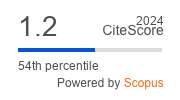Governing Sister City: Global Collaboration and Local Operation
DOI:
https://doi.org/10.52152/22.2.80-103(2024)Keywords:
Local governance; Government capacity; Sister city; Twinning local governmentAbstract
This research aims to analyze the governance of a sister city from the perspective of local governments in Indonesia. It seeks to answer questions, such as why South Korea and Indonesia continue working together despite the cessation of activities during certain periods. It focuses on the dynamic of this cooperation management, the actors involved, and their roles. This research uses a qualitative method to collect data through interviews with informants from local governments and nongovernmental agencies, which serve as key supporting components. Results showed three types of outcome: dynamic, effective, and unimplemented cooperation. Three factors explain these outcomes: administrative support, local government capacity, and leadership. In addition, the nature of cooperation has evolved from being limited to government agencies to involving nongovernmental agencies, thereby strengthening the phenomenon of decentralized governance. These results are evidence of local government agencies' decentralized cooperation, which extends beyond national borders and involves nongovernmental agencies.
References
Bekele, Y. W., & Kjosavik, D. J. (2016). Decentralised local governance and poverty reduction in Post-1991 Ethiopia: A Political Economy Study. Politics and Governance, 4(4), 1-15. doi:10.17645/pag.v4i4.590
Bendlin, L. (2020). Orchestrating Local Climate Policy in the European Union: Inter‐Municipal Coordination and the Covenant of Mayors in Germany and France. Wiesbaden, Germany: Springer.
Boersma, R. G. (2015). The Success of Sister-City Partnerships between Dutch Municipalities and a Municipality in a CEEC, Formalized Between 1989-2000. (Unpublished master’s thesis). University of Twente, Enschede, Netherlands.
Buckley, P. H., Takahashi, A., & Anderson, A. (2015). The role of sister cities’ staff exchanges in developing “learning cities”: Exploring necessary and sufficient conditions in social capital development utilizing proportional odds modeling. International Journal of Environmental Research and Public Health, 12, 7133-7153. doi:10.3390/ijerph120707133
Cankar, S. S., Seljak, J., & Petkovšek, V. (2013). Cross-border cooperation as a way of overcoming the global financial and economic crisis. Lex Localis, Journal of Local Self-Government, 11(3). Retrieved from https://eds.p.ebscohost.com/abstract?site=eds&scope=site&jrnl=15815374&asa=Y&AN=89634908&h=ZD0JKyx%2BUNhfyqJKlwoeUm71zmhX41f43nkQrX31L1%2BqFcifJFln6SQQI%2F2mshnozqtxjW7NO9xE6NDXv9e%2B5g%3D%3D&crl=f&resultLocal=ErrCrlNoResults&resultNs=Ehost&crlhashurl=log
Cheema, G. S., & Rondinelli, D. A. (2007). Decentralizing governance: Emerging concepts and practices. [SpringerLink version]. doi:10.1007/978-3-319-31816-5_3918-1
Cremer, R. F., Bruin, A. D., & Dupuis, A. (2001). International sister-cities bridging the global-local divide. American Journal of Economics and Sociology, 60(1), 377-401.
EURE Interreg Europe. (2021). To improve the participation of small, medium and peripheral cities in the definition of the european urban policy. Retrieved from https://projects2014–2020.interregeurope.eu/fileadmin/user_upload/tx_tevprojects/library/file_1623940778.pdf
Fastenrath, S., Coenen, L., & Davidson, K. (2019). Urban resilience in action: The resilient Melbourne strategy as transformative urban innovation policy? Sustainability, 11(693.MDPI AG.), 1-10. doi: 10.3390/su11030693
Geldin, S. (2019). Advancing urban adaptation where it counts: Reshaping unequal knowledge and resource diffusion in networked Indonesian cities. Environment and Urbanization, 31(1), 13-32. doi: 10.1177/0956247818776532
Gibbs, M., Gooding, A., Woods, R., Pillora, S., & Smith, R. (2015). Sister Cities and International Alliances. Retrieved from Australian Centre of Excellence for Local Government (ACELG), University of Technology Sydney website: https://www.uts.edu.au/sites/default/files/ACELG-2015_Sister-cities-and-international-alliances.pdf
Glaser, D., Barluzzi, L., & Drolet, J. (2016). International cooperation in small cities and towns: New directions and innovative local practices in British Columbia. Retrieved from The British Columbia Council for International Cooperation (BCCIC) website: https://idl-bnc-idrc.dspacedirect.org/handle/10625/55859%0AC:%5CUsers%5CMartin%5CZotero%5Cstorage%5C2QEU5XRN%5C55859.html
Grey, M. A., & Woodrick, A. C. (2002). Unofficial sister cities: Meatpacking labor migration between villachuato, mexico, and marshalltown, iowa. Human Organization, 61(4), 364-376. doi:10.17730/humo.61.4.8xhdfg6jggqccb2c
Heather, H. (1994). Sister cities program links cultures, businesses. The American City & County, 109(10). Retrieved from https://go.gale.com/ps/i.do?id=GALE%7CA15933547&sid=googleScholar&v=2.1&it=r&linkaccess=abs&issn=0149337X&p=AONE&sw=w&userGroupName=82sookmyung&aty=ip
Hu, T., Natarajan, S., & Delios, A. (2021). Sister cities, cross-national FDI, and the subnational FDI location decision. Journal of International Business Studies, 52, 1279-1301. doi:10.1057/S41267-021-00409-2/METRICS
Hudson, D., Lemay-Hébert, N., McLoughlin, C., & Roche, C. (2020). Leadership and change in Asia-Pacific: Where does political will come from? Politics and Governance, 8(4), 131-135. doi:10.17645/pag.v8i4.3831
Hulst, R., & Montfort, A. van. (Eds.). (2007). Inter-municipal cooperation in Europe. Springer. Retrieved from https://link.springer.com/book/10.1007/978-3-319-62819-6
Kao, J. C., Cho, C. C., & Kao, R. H. (2021). A study on transboundary marine governance of floating marine debris–taking Kinmen–Xiamen waters between China and Taiwan as an example. Sustainability, 13. doi:10.3390/su132414063
Knox, P. L., & Taylor, P. J. (1995). World cities in a world-system (1st ed.). Cambridge, UK: Cambridge University Press.
Krukowska-Siembida, P. (2020). Bases of international cooperation of local governments. Lex Localis, Journal of Local Self-Government, 18(4), 885-900. doi:10.4335/18.3.885-900(2020)
Liu, X., & Hu, X. (2018). Are ‘sister cities’ from ‘sister provinces’? An exploratory study of sister city Relations (SCRs) in China. Networks and Spatial Economics, 18(3), 493. doi:10.1007/s11067-018-9419-9
Mascitelli, B., & Chung, M. (2008). Using sister city relationships to access The Chinese market. Journal of International Trade Law and Policy, 7(2), 203-215. Retrieved from https://dro.deakin.edu.au/eserv/DU:30017955/chung-usingsister-post-2008.pdf
Miles, M. B., Huberman, A. M., & Saldana, J. (2014). Qualitative data analysis a methods sourcebook (3rd ed.). London, UK: SAGE Publication Inc.
Mocca, E. (2018). All cities are equal, but some are more equal than others: Policy mobility and asymmetric relations in inter-urban networks for sustainability. International Journal of Urban Sustainable Development, 10(2), 139-153. doi:10.1080/19463138.2018.1487444
Nogueira, F. (2023). European urban agenda: The predicaments of decentralised coordinative action. In F. Teles, C. Rodrigues, F. Ramos, & A. Botelho (Eds.), Territorial innovation in less developed regions: Governance, technologies, and sustainability (pp. 215-243). doi:10.1007/978-3-031-20577-4_11
Pujiraharjo, H. S. (2008). Evaluating sister city policies: A case study of the sister province policy between Kyoto prefecture (japan) and Jogjakarta special province. (Master’s thesis, Ritsumeikan University, Kyoto, Japan). Retrieved from https://www.ritsumei.ac.jp/gsps/eng/education/thesis/masters.html/
Roberts, J. M. (2004). Alliances, coalitions and partnership. Gabriola Island, CA: New Society Publishers.
Rochman, G. P., & Hudalah, D. (2020). How does leadership factors spur the success of sister city cooperation? Journal of Physics: Conference Series, 1469(1). doi:10.1088/1742-6596/1469/1/012032
Rustandi, A. (2021). Rencana Atlet PON XX Jabar Gelar TC di Gyeongsangbuk-Do Ditunda. Retrieved from https://fokusjabar.id/2021/07/09/rencana-atlet-pon-xx-jabar-gelar-tc-di/
Srikandini, A. G., Voorst, R. Van, & Hilhorst, D. (2018). Disaster risk governance in Indonesia and Myanmar: The practice of co-governance. Politics and Governance, 6(3), 180-189. doi:10.17645/pag.v6i3.1598
Suh, C. S., Chang, P. Y., & Lim, Y. (2012). Spill-up and spill-over of trust: An extended test of cultural and institutional theories of trust in south korea. Sociological Forum, 27(2), 504-526. doi: 10.1111/j.1573-7861.2012.01328.x
Syahrin, M.N., Mahyuni, Sompa, A.T., Apriansyah, Jamaluddin, Asmu’i,...Alunaza, H. (2020). Bottom-up model analysis of community involvement in the sister city cooperation for flood mitigation in East Kalimantan. Revista UNISCI, 53, 143-156.
Teles, F. (2016). Local governance and inter-municipal cooperation. [SpringerLink Version]. doi: 10.1057/9781137445742
Teles, F., & Swianiewicz, P. (Eds.). (2018). Inter-municipal cooperation in Europe. [SpringerLink Version]. doi: 10.1007/978-3-319-62819-6
UN Centre for Human Settlements (Habitat), United Towns Organization, & World Association of Cities and Local Authorities Coordination. (2001). City-to-city cooperation: Issues arising from experience. Retrieved from https://digitallibrary.un.org/record/501789
Wilcox, L., Daugherty, E., & Rasouli, S. (2013). The Minneapolis-Najaf sister city relationship: A model for sister city relationships between Iraqi and American Cities in support of reconciliation. Retrieved from The Iraqi and American Reconciliation Project website: https://engagemn.com/2009/08/16/minneapolis-and-najaf-become-sister-cities/
Zerbinati, S. (2012). Multi-level governance and EU structural funds: An entrepreneurial local government perspective. Local Government Studies, 38(5), 577-597. doi:10.1080/03003930.2011.649914
Downloads
Published
Issue
Section
License
Copyright (c) 2024 Lex localis - Journal of Local Self-Government

This work is licensed under a Creative Commons Attribution-NonCommercial-NoDerivatives 4.0 International License.








